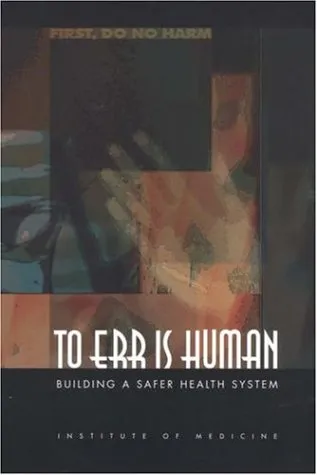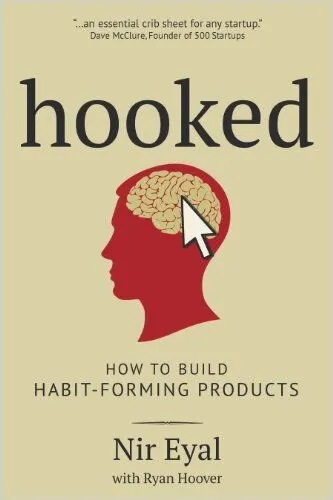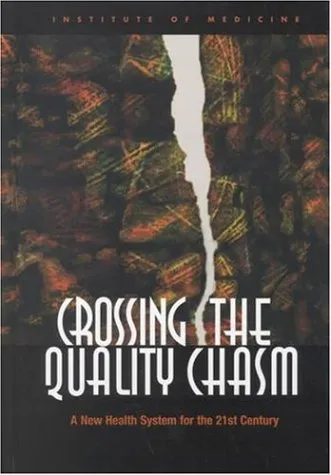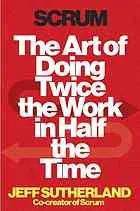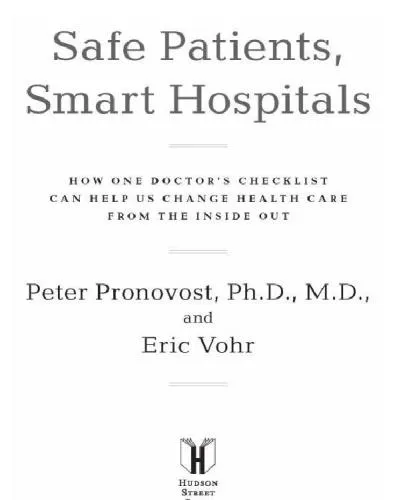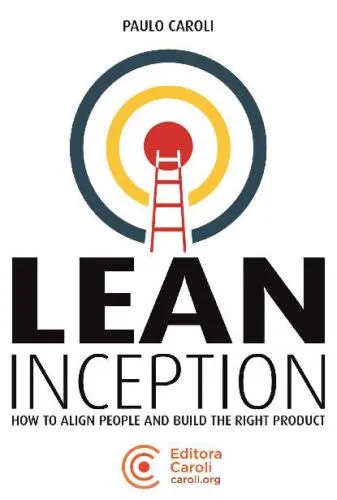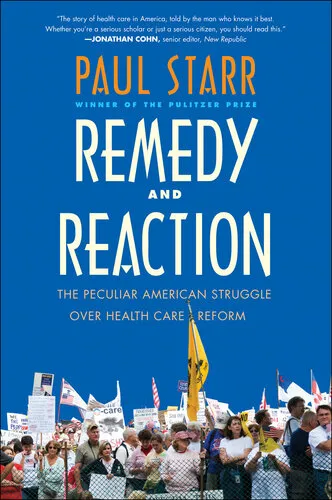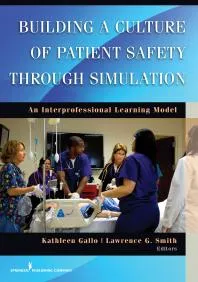To Err Is Human: Building a Safer Health System
4.6
بر اساس نظر کاربران

شما میتونید سوالاتتون در باره کتاب رو از هوش مصنوعیش بعد از ورود بپرسید
هر دانلود یا پرسش از هوش مصنوعی 2 امتیاز لازم دارد، برای بدست آوردن امتیاز رایگان، به صفحه ی راهنمای امتیازات سر بزنید و یک سری کار ارزشمند انجام بدینکتاب های مرتبط:
معرفی کتاب 'To Err Is Human: Building a Safer Health System'
کتاب 'To Err Is Human: Building a Safer Health System' یکی از آثار برجسته در زمینه بهبود کیفیت خدمات بهداشتی و درمانی است که توسط کمیته کیفیت مراقبتهای بهداشتی در آمریکا نگارش شده است. این کتاب در سال ۱۹۹۹ منتشر شد و توجه فراوانی را به موضوع ایمنی بیماران و کاهش خطاهای پزشکی جلب کرد.
خلاصه کتاب
این کتاب بر اهمیت شناسایی و کاهش خطاهای پزشکی برای بهبود کیفیت و ایمنی مراقبتهای بهداشتی تأکید دارد. نویسندگان با استفاده از دادهها و پژوهشهای گسترده نشان میدهند که خطاها در سیستم بهداشت و درمان آمریکا به مرگ و آسیب بیمارانی بسیاری منجر میشود. در مقدمه کتاب، میزان قابل توجه این خطاها و تأثیر مخرب آنها بر جامعه به تصویر کشیده شده و چالشهای پیش روی سیستم بهداشتی برای کاهش این خطاها بررسی میشود.
این کتاب در پنج بخش اصلی تدوین شده است. ابتدا به شناخت و تعریف مسئله پرداخته میشود و در پی آن راهبردهایی برای بهبود و اصلاح فرآیندها و ارتقای ایمنی بیماران ارائه میگردد. بخشهای پایانی به نهادهای مختلف پیشنهاداتی برای اجرای تغییرات مورد نیاز و ارتقای فرهنگ ایمنی را شامل میشود.
نکات کلیدی کتاب
- اهمیت فرهنگ ایمنی: تأکید بر ترویج فرهنگی که اشتباهات را شناسایی و از وقوع مجدد آنها جلوگیری کند.
- ضرورت سیستمهای گزارشدهی: ایجاد سیستمهای گزارشدهی منسجم و مطمئن برای شناسایی و تحلیل خطاها.
- آموزش و آموزش مستمر: افزایش دانش و مهارتهای حرفهای کارکنان بهداشتی برای کاهش خطاهای انسانی.
- استفاده از تکنولوژی: بهرهگیری از فناوریهای نوین برای بهبود کیفیت مراقبتها و کاهش خطاها.
- همکاری بینالمللی: تعهد به اشتراکگذاری اطلاعات و تجارب بینالمللی برای تقویت ایمنی بیماران.
نقلقولهای معروف از کتاب
"خطاهای انسانی غیرقابل اجتناباند، اما میتوان سیستمهایی طراحی کرد که اثرات مخرب آنها را کاهش دهد."
"بهبود ایمنی بیمار نیازمند دیدگاهی چندبخشی و همکاری بین تخصصی است."
چرا این کتاب مهم است
کتاب 'To Err Is Human' به عنوان یک اثر مرجع در زمینه ایمنی بیماران و بهبود کیفیت در نظامهای بهداشتی شناخته میشود. این کتاب توانست توجه عمومی و تخصصی را به موضوع خطاهای پزشکی جلب کند و زمینهساز ایجاد تغییرات گستردهای در سیاستگذاریهای بهداشتی شود. تأثیرات این کتاب تا به امروز ادامه دارد و به بسیاری از کشورها کمک کرده است تا با استفاده از اصول مطرح شده، ایمنی بیماران را بهبود بخشند و نرخ مرگ و میر ناشی از خطاهای پزشکی را کاهش دهند. از این رو، 'To Err Is Human' بهعنوان نقشهراهی برای اصلاح ساختارهای بهداشتی و ایجاد محیطهای ایمنتر برای بیماران به شمار میآید.
Introduction to 'To Err Is Human: Building a Safer Health System'
The book 'To Err Is Human: Building a Safer Health System' represents a pivotal moment in healthcare literature. Released by the Committee on Quality of Health Care in America, Institute of Medicine, it explores the complex landscape of medical errors, highlighting the urgent need for systemic changes to enhance patient safety.
Detailed Summary of the Book
The central thesis of 'To Err Is Human' is that healthcare systems, rather than individual caregivers, are often accountable for medical errors. The book underscores the startling prevalence of such errors, with studies estimating up to 98,000 annual deaths in the United States alone due to preventable medical mistakes. The authors argue for a cultural transformation within healthcare that prioritizes patient safety and recognizes errors as opportunities for learning and improvement. The work is comprehensive, emphasizing the creation of safer healthcare environments through robust systems, leadership dedicated to safety, and a culture of transparency and accountability.
Structured with clear and actionable guidance, the book encourages the adoption of safety standards used in other high-risk industries, like aviation. It advocates for a non-punitive approach to errors, encouraging health professionals to report mistakes without fear of retribution, thus fostering a learning environment.
Key Takeaways
- Medical errors are a significant cause of harm and mortality, with systemic issues often at their root.
- Cultivating a culture of safety within healthcare institutions is crucial for preventing errors.
- Error reporting should be non-punitive to encourage transparency and learning.
- The implementation of standard safety practices and protocols can significantly reduce the incidence of errors.
- Leadership commitment is essential for driving systemic change and promoting a safety-first mindset.
Famous Quotes from the Book
"Avoiding errors of execution is crucial to ensuring greater safety."
"In healthcare, the possibilities for error are endless, but so are the opportunities for improvement."
"Emphasizing safety is not only a moral imperative, it is a practical necessity."
Why This Book Matters
'To Err Is Human' is not just a book; it is a clarion call for substantial reformative action in healthcare. By illuminating the frequency and gravity of medical errors, the book has galvanized healthcare providers and policymakers to take concrete steps toward creating safer patient environments. Its influence extends beyond the United States, shaping global approaches to patient safety and error reporting. The book's compelling arguments for systemic change rather than blaming individuals highlights that error prevention is a shared responsibility, necessitating diligence, and dedication from all stakeholders in the healthcare system.
Its legacy is reflected in the numerous initiatives, policies, and inquiries into patient safety that have proliferated since its publication, making it an indispensable text for anyone involved in healthcare delivery, policy-making, or health education.
دانلود رایگان مستقیم
شما میتونید سوالاتتون در باره کتاب رو از هوش مصنوعیش بعد از ورود بپرسید
دسترسی به کتابها از طریق پلتفرمهای قانونی و کتابخانههای عمومی نه تنها از حقوق نویسندگان و ناشران حمایت میکند، بلکه به پایداری فرهنگ کتابخوانی نیز کمک میرساند. پیش از دانلود، لحظهای به بررسی این گزینهها فکر کنید.
این کتاب رو در پلتفرم های دیگه ببینید
WorldCat به شما کمک میکنه تا کتاب ها رو در کتابخانه های سراسر دنیا پیدا کنید
امتیازها، نظرات تخصصی و صحبت ها درباره کتاب را در Goodreads ببینید
کتابهای کمیاب یا دست دوم را در AbeBooks پیدا کنید و بخرید
1538
بازدید4.6
امتیاز0
نظر98%
رضایتنظرات:
4.6
بر اساس 0 نظر کاربران
Questions & Answers
Ask questions about this book or help others by answering
No questions yet. Be the first to ask!
